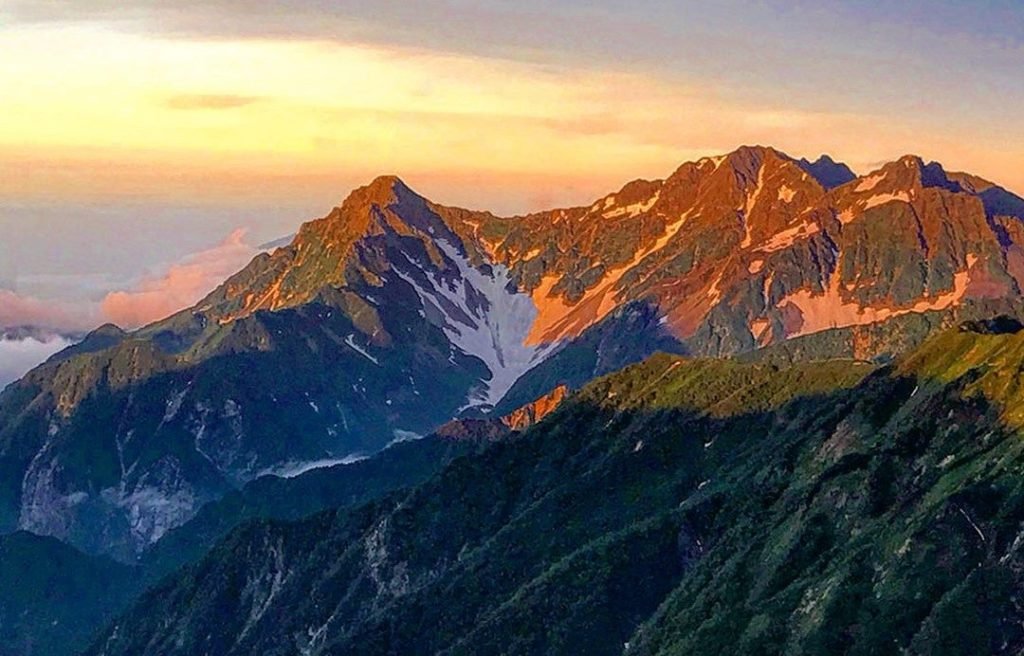Back to: GEOGRAPHY SS1
Welcome to class!
In today’s class, we will be talking about the mountains. Enjoy the class!
Mountains

Mountains are greatly elevated land surfaces resulting from the intense action of internal forces. They have steep slopes and show distinct peaks. Mountains are classified according to their mode of formation, resulting in four major types of mountains. These are
- Fold mountain
- Block Mountain
- Volcanic Mountain
- Residual mountain

Fold Mountains:
Characteristics: They contain old hard rocks with steep sides. They have wrinkling or folding appearance and show distinct peaks of great heights. Fold Mountains exist in layered form. They are soft and have anticlines and synclines.
Folding shortens the earth’s crust. They form the most widespread type of mountains and are noted for active volcanoes. They form the highest Mountain ranges. Examples of Fold Mountains include Himalayas, Rockies, Andes, Alps and Atlas Mountains.
Mode of formation: They are formed by large-scale horizontal earth movement as a result of stress and compressional forces which cause expansion or contraction of some parts of the earth. Such stresses, therefore, subject the rocks to compressional forces.
The compressional forces produce wrinkling or folding of the earth. The up folds of the wrinkles are anticlines while the down folds are called a syncline.
A fold may be simple, but where the compressional forces are complex, it results in asymmetrical folding. When pushed further, it forms an over-fold. An over-fold later forms a recumbent fold. In some cases, faults or cracks result in extreme folding to form over thrust fold.
Evaluation
- What is a mountain?
- State the types of mountains.
Block Mountains:
Characteristics: Block Mountains are made up of old hard rocks with flat or slightly sloping surfaces. They have steep sides. They are associated with rift valleys. Examples of Block Mountains include Hunsruck Mountain, Voges Mountain and the Black Forest of the Rhine land. Example of the rift valley is the East African rift valley system which is about 4.800km.
Mode of formation: Block Mountains are formed when the earth cracks due to faulting. Faulting may result from tensional forces or compressional forces. Tensional forces are those that tend to pull the earth’s crust apart, and they result in a normal fault while the compressional forces are those that shorten the crust to produce a reverse or thrust fault. Therefore, if a block of rock between two normal faults rises or the land on either side of the block subsides, a Block mountain or Horst is formed. At times, a block in between two faults may subside, so that rift valley or graben is formed. agents of denudation modify the slopes and height of Block Mountains.
Evaluation
- Mention any three types of a mountain.
- Block mountain is also called ……
- The rift valley is associated with ……. mountain?
Volcanic Mountain:
Characteristics: Volcanic Mountains are made up of lava. They have irregular sides with a conical shape. Materials that make up volcanic mountains include ash, volcanic bombs, and cinders which are arranged in layers. Examples include Mt. Fuji (Japan), Mt. Mayon (Philippines), Mt Kilimanjaro, Kenya, Elgon, Ruwenzori and Cameroon (all in Africa).
Mode of formation: Volcanic Mountains are formed from volcanoes which are built from materials (molten magma) ejected through fissures or vents in the earth’s crust. The materials also include molten lava, volcanic bombs, cinders, ash, dust and liquid mud. They fall around the vent in successive layers, building up an extensive volcanic cone. Volcanic mountains are also called a mountain of accumulation.
Residual Mountain:
Characteristic: Residual Mountains are formed from the remains of already existing mountains. They have irregular surfaces with steep sides. They occur in varying heights and sizes and are caused by agents of denudation. Examples include Mt Manodnock (U.S.A), Highlands of Scotland, Highlands of Scandinavia and Decon Plateau.
Mode of formation: Residual Mountains are formed from already existing mountains which are lowered or reduced by agents of denudation such as running water, ice and wind. Residual mountains are, therefore, the remains of the existing mountains. Some hard and very resistant parts of the existing mountains remain after the lowering of the upper part. This remaining part is called residual mountain which is also called the mountain of denudation.
Importance or uses of mountains
- Sources of minerals.
- Formation of rainfall.
- For transhumance.
- Climatic barriers.
- For defence.
- As tourist centres.
- Construction of Hydro-Electric Power.
- As wind-breaks.
Disadvantages of mountains
- Barriers to Communication.
- Mountains Promote Soil Erosion.
- Prevent Human Habitation.
- Mountains Occupy good land that could have been used for other useful things.
- Mountains soil is poor in nutrients.
Evaluation
- Volcanic and residual mountains are also called ……… and………….
- Mention two examples of a volcanic mountain.
General evaluation
- Mention the types of mountains.
- Explain the mode of formation of Residual Mountain.
- What is the mountain of accumulation?
- Give four importance of mountains to man.
- State the disadvantages of mountains.
Reading assignment
Read on mountains in Essential Geography, Pgs. 31-33
Theory
- With diagrams, explain the formation of any two types of a mountain.
- List two disadvantages of a mountain.
In our next class, we will be talking about Plateaux. We hope you enjoyed the class.
Should you any further question, feel free to ask in the comment section below and trust us to respond as soon as possible.

Nice web
send me notes and revision question please
Me too
I need the note how can I copy
I want the note, I can’t copy
Nice
is it true that people who live near mountains tend to run faster than others who don’t live near mountains
pls send me notes for sss1 third term geography